Solar eclipse of February 15, 1961
A total solar eclipse occurred on February 15, 1961. Totality was visible from France, Monaco, Italy, San Marino, SFR Yugoslavia (parts now belonging to Croatia, Bosnia and Herzegovina, Montenegro, Serbia and Kosovo, North Macedonia), Albania, Bulgaria including the capital city Sofia, Romania including the capital city Bucharest, and the Soviet Union (parts now belonging to Ukraine, Russia and Kazakhstan). The maximum eclipse was recorded near Novocherkassk (Russian SFSR).
| Solar eclipse of February 15, 1961 | |
|---|---|
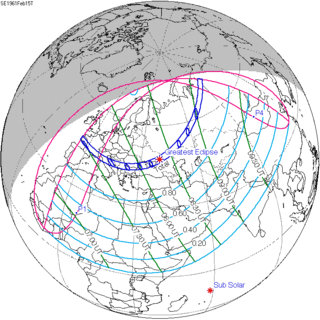 Map | |
| Type of eclipse | |
| Nature | Total |
| Gamma | 0.883 |
| Magnitude | 1.036 |
| Maximum eclipse | |
| Duration | 165 sec (2 m 45 s) |
| Coordinates | 47.4°N 40°E |
| Max. width of band | 258 km (160 mi) |
| Times (UTC) | |
| Greatest eclipse | 8:19:48 |
| References | |
| Saros | 120 (58 of 71) |
| Catalog # (SE5000) | 9422 |
This was the 51st of 55 umbral eclipses in Solar Saros 120.
Upcoming 4 umbral eclipses
52. 1979 February 26
53. 1997 March 9
54. 2015 March 20
55. 2033 March 30
Related eclipses
Solar eclipses of 1961–1964
This eclipse is a member of a semester series. An eclipse in a semester series of solar eclipses repeats approximately every 177 days and 4 hours (a semester) at alternating nodes of the Moon's orbit.[2]
| Solar eclipse series sets from 1961–1964 | ||||||
|---|---|---|---|---|---|---|
| Descending node | Ascending node | |||||
| Saros | Map | Saros | Map | |||
| 120 |  1961 February 15 Total |
125 | 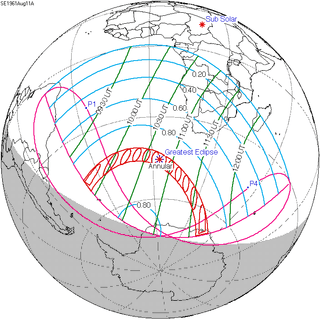 1961 August 11 Annular | |||
| 130 | 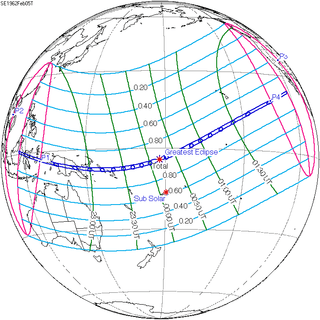 1962 February 5 Total |
135 | 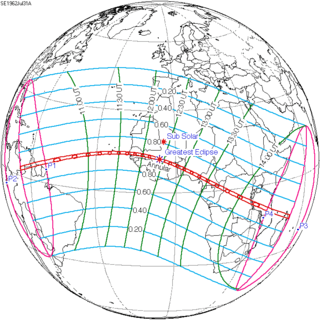 1962 July 31 Annular | |||
| 140 | 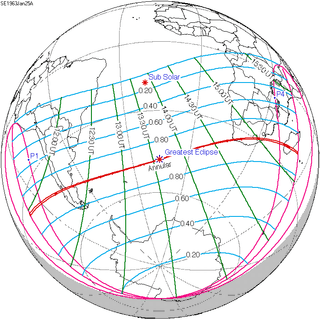 1963 January 25 Annular |
145 | 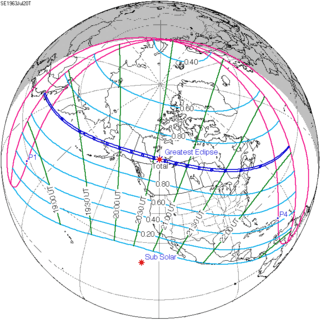 1963 July 20 Total | |||
| 150 | 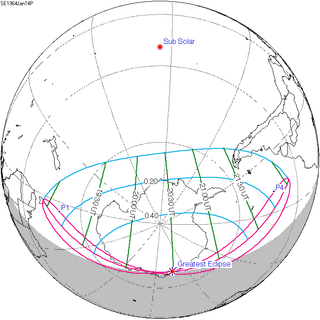 1964 January 14 Partial |
155 | 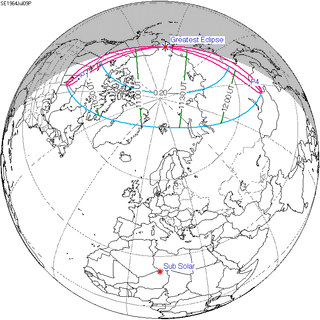 1964 July 9 Partial | |||
| Partial solar eclipses of June 10, 1964 and December 4, 1964 belong in the next lunar year set. | ||||||
Saros 120
This eclipse is a part of Saros cycle 120, repeating every 18 years, 11 days, containing 71 events. The series started with partial solar eclipse on May 27, 933 AD, and reached an annular eclipse on August 11, 1059. It was a hybrid event for 3 dates: May 8, 1510, through May 29, 1546, and total eclipses from June 8, 1564, through March 30, 2033. The series ends at member 71 as a partial eclipse on July 7, 2195. The longest duration of totality was 2 minutes, 50 seconds on March 9, 1997. All eclipses in this series occurs at the Moon’s descending node.
| Series members 55–65 occur between 1901 and 2100 | ||
|---|---|---|
| 55 | 56 | 57 |
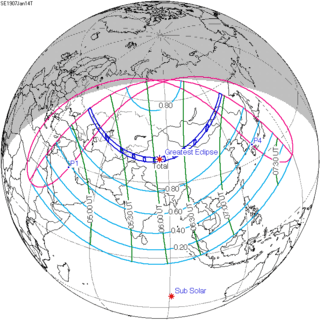 January 14, 1907 |
 January 24, 1925 |
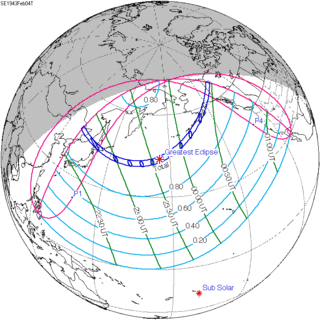 February 4, 1943 |
| 58 | 59 | 60 |
 February 15, 1961 |
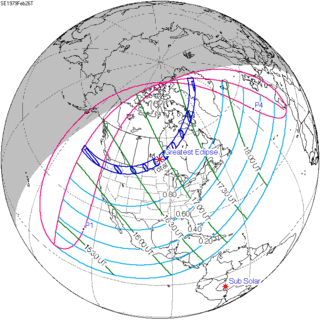 February 26, 1979 |
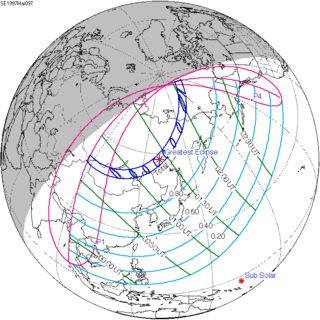 March 9, 1997 |
| 61 | 62 | 63 |
 March 20, 2015 |
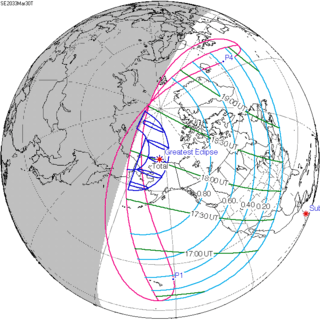 March 30, 2033 |
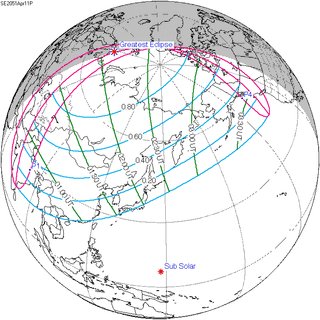 April 11, 2051 |
| 64 | 65 | |
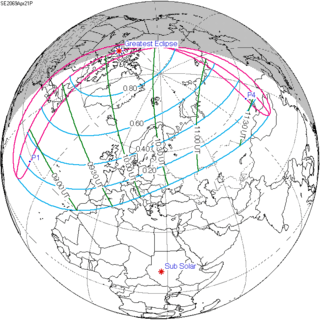 April 21, 2069 |
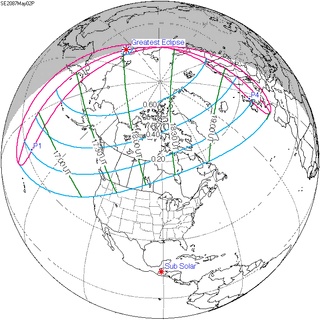 May 2, 2087 | |
Metonic series
The metonic series repeats eclipses every 19 years (6939.69 days), lasting about 5 cycles. Eclipses occur in nearly the same calendar date. In addition, the octon subseries repeats 1/5 of that or every 3.8 years (1387.94 days). All eclipses in this table occur at the Moon's descending node.
| 21 eclipse events, progressing from north to south between July 11, 1953 and July 11, 2029 | ||||
|---|---|---|---|---|
| July 10–12 | April 29–30 | February 15–16 | December 4–5 | September 21–23 |
| 96 | 98 | 100 | 102 | 104 |
| July 12, 1915 | April 30, 1919 | February 15, 1923 | December 5, 1926 | September 22, 1930 |
| 106 | 108 | 110 | 112 | 114 |
| July 11, 1934 | April 30, 1938 | February 15, 1942 | December 4, 1945 | September 22, 1949 |
| 116 | 118 | 120 | 122 | 124 |
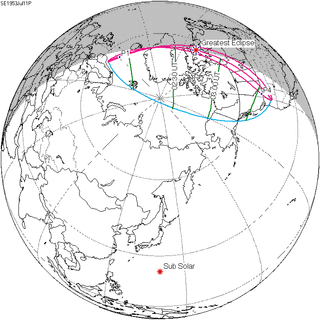 July 11, 1953 |
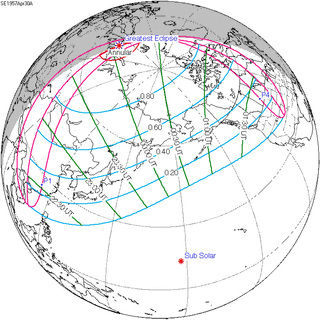 April 30, 1957 |
 February 15, 1961 |
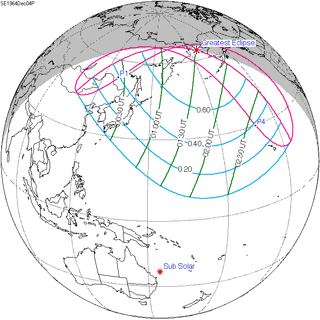 December 4, 1964 |
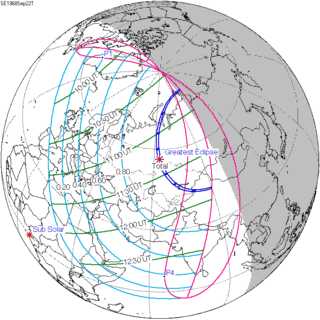 September 22, 1968 |
| 126 | 128 | 130 | 132 | 134 |
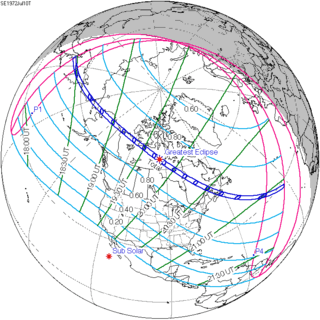 July 10, 1972 |
 April 29, 1976 |
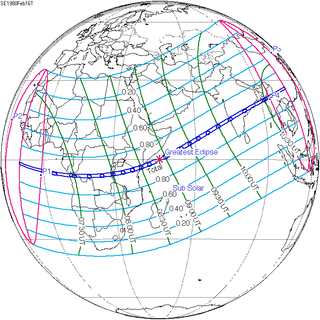 February 16, 1980 |
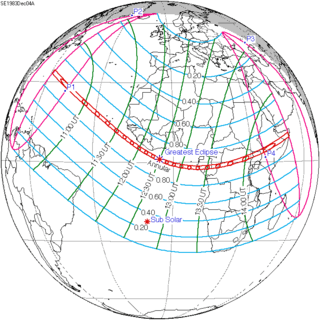 December 4, 1983 |
 September 23, 1987 |
| 136 | 138 | 140 | 142 | 144 |
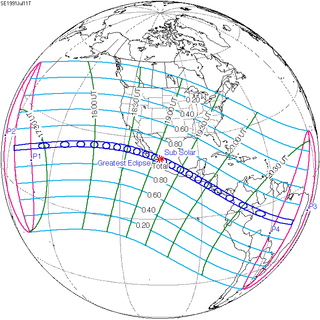 July 11, 1991 |
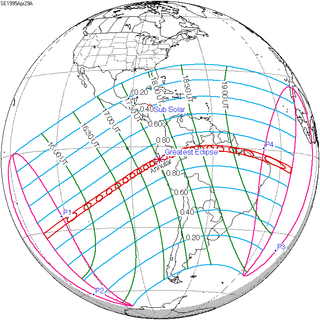 April 29, 1995 |
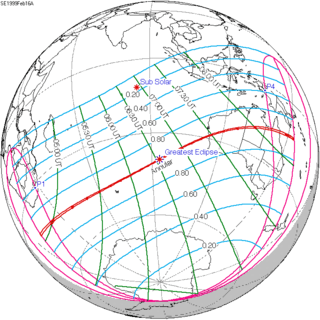 February 16, 1999 |
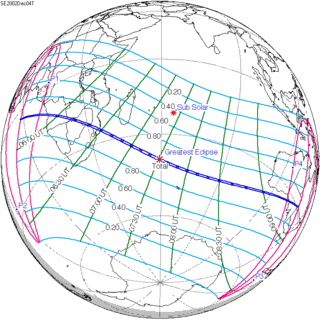 December 4, 2002 |
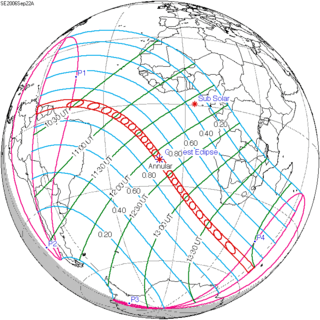 September 22, 2006 |
| 146 | 148 | 150 | 152 | 154 |
 July 11, 2010 |
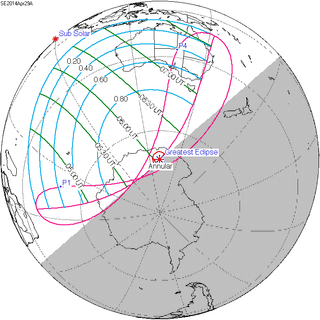 April 29, 2014 |
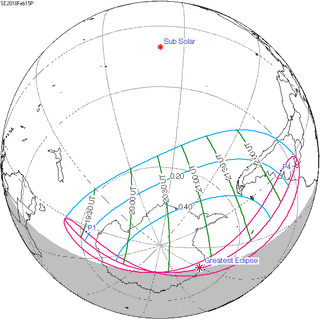 February 15, 2018 |
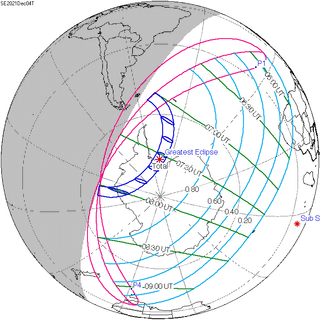 December 4, 2021 |
 September 21, 2025 |
| 156 | 158 | 160 | 162 | 164 |
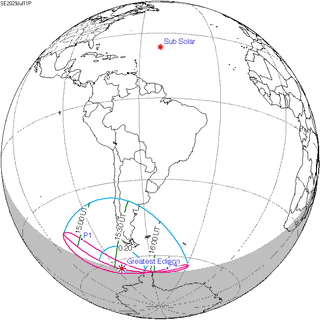 July 11, 2029 |
April 29, 2033 | February 15, 2037 | December 4, 2040 | September 21, 2044 |
Notes
- Elley, Derek (2013). The Epic Film: Myth and History. Routledge. p. 94. ISBN 9781317928874.
- van Gent, R.H. "Solar- and Lunar-Eclipse Predictions from Antiquity to the Present". A Catalogue of Eclipse Cycles. Utrecht University. Retrieved 6 October 2018.
References
- Earth visibility chart and eclipse statistics Eclipse Predictions by Fred Espenak, NASA/GSFC
- Solar eclipse of February 15, 1961 in Russia
| Wikimedia Commons has media related to Solar eclipse of 1961 February 15. |
.jpg)
